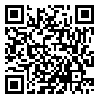Volume 28 - Supplementary
IBJ 2024, 28 - Supplementary: 229-229 |
Back to browse issues page
Download citation:
BibTeX | RIS | EndNote | Medlars | ProCite | Reference Manager | RefWorks
Send citation to:



BibTeX | RIS | EndNote | Medlars | ProCite | Reference Manager | RefWorks
Send citation to:
Shahi N, Shahi M, Davaridolatabadi N, Shahi N. Application of Internet of Things in Elderly Care: A Review Study. IBJ 2024; 28 :229-229
URL: http://ibj.pasteur.ac.ir/article-1-4652-en.html
URL: http://ibj.pasteur.ac.ir/article-1-4652-en.html
Abstract:
Introduction: The growing elderly population worldwide has posed new challenges in providing care for these individuals. As an emerging technology, the Internet of Things (IoT) has significant potential to improve the quality of life for the elderly and provide them with better care. This study aimed to review the applications of IoT in elderly care.
Search Strategy: In this review study, scientific databases PubMed, SID, Web of Science, and Google Scholar were searched using the keywords "Internet of Things"m "elderly care"m and "health monitoring." Inclusion criteria included original and non-original articles related to IoT in elderly care. Articles published between 2015 and 2024, full-text articles in English or Farsi, and articles relevant to the topic were included. Irrelevant articles were excluded. Titles and abstracts of articles were then reviewed based on the inclusion criteria. The full texts of the published articles were also reviewed.
Results: A total of 50 relevant articles were identified. The findings of these articles suggest that IoT can significantly enhance various aspects of elderly care, including health monitoring, promoting independence, ensuring security, and facilitating communication. (1) Health monitoring: wearable devices and IoT sensors can be used to track vital signs, physical activity, and overall health status of the elderly individuals. (2) Promoting independence: IoT systems can assist the elderly with daily tasks such as cooking, cleaning, and dressing, thereby fostering greater independence. (3) Ensuring security: IoT security systems can monitor the homes of elderly individuals and provide alerts in the event of issues such as water leaks, fires, or falls. (4) Facilitating communication: IoT devices can help the elderly maintain connections with family and friends, which can alleviate feelings of isolation and loneliness.
Conclusion and Discussion: IoT can potentially improve the quality of life for the elderly and provide them better, more timely care. By investing in research and development, addressing existing challenges, and ensuring responsible use of this technology, IoT can enhance the well-being of the elderly worldwide. By overcoming these challenges and continuing research, IoT has the potential to revolutionize elderly care, promoting better health outcomes, increased independence, and improved quality of life for our aging population.

Search Strategy: In this review study, scientific databases PubMed, SID, Web of Science, and Google Scholar were searched using the keywords "Internet of Things"m "elderly care"m and "health monitoring." Inclusion criteria included original and non-original articles related to IoT in elderly care. Articles published between 2015 and 2024, full-text articles in English or Farsi, and articles relevant to the topic were included. Irrelevant articles were excluded. Titles and abstracts of articles were then reviewed based on the inclusion criteria. The full texts of the published articles were also reviewed.
Results: A total of 50 relevant articles were identified. The findings of these articles suggest that IoT can significantly enhance various aspects of elderly care, including health monitoring, promoting independence, ensuring security, and facilitating communication. (1) Health monitoring: wearable devices and IoT sensors can be used to track vital signs, physical activity, and overall health status of the elderly individuals. (2) Promoting independence: IoT systems can assist the elderly with daily tasks such as cooking, cleaning, and dressing, thereby fostering greater independence. (3) Ensuring security: IoT security systems can monitor the homes of elderly individuals and provide alerts in the event of issues such as water leaks, fires, or falls. (4) Facilitating communication: IoT devices can help the elderly maintain connections with family and friends, which can alleviate feelings of isolation and loneliness.
Conclusion and Discussion: IoT can potentially improve the quality of life for the elderly and provide them better, more timely care. By investing in research and development, addressing existing challenges, and ensuring responsible use of this technology, IoT can enhance the well-being of the elderly worldwide. By overcoming these challenges and continuing research, IoT has the potential to revolutionize elderly care, promoting better health outcomes, increased independence, and improved quality of life for our aging population.

| Rights and permissions | |
 |
This work is licensed under a Creative Commons Attribution-NonCommercial 4.0 International License. |







.png)
